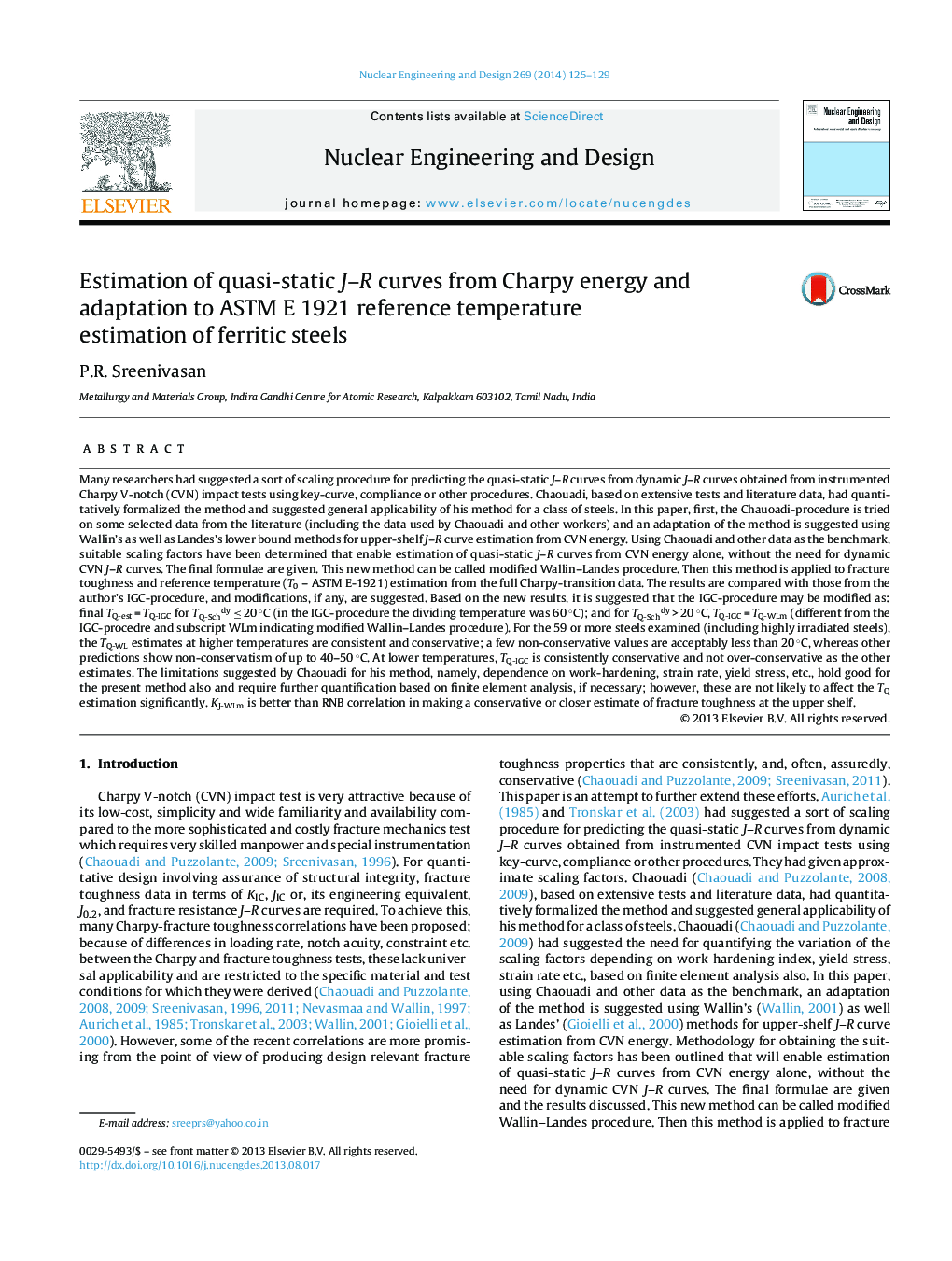| کد مقاله | کد نشریه | سال انتشار | مقاله انگلیسی | نسخه تمام متن |
|---|---|---|---|---|
| 296601 | 511730 | 2014 | 5 صفحه PDF | دانلود رایگان |

Many researchers had suggested a sort of scaling procedure for predicting the quasi-static J–R curves from dynamic J–R curves obtained from instrumented Charpy V-notch (CVN) impact tests using key-curve, compliance or other procedures. Chaouadi, based on extensive tests and literature data, had quantitatively formalized the method and suggested general applicability of his method for a class of steels. In this paper, first, the Chauoadi-procedure is tried on some selected data from the literature (including the data used by Chaouadi and other workers) and an adaptation of the method is suggested using Wallin's as well as Landes's lower bound methods for upper-shelf J–R curve estimation from CVN energy. Using Chaouadi and other data as the benchmark, suitable scaling factors have been determined that enable estimation of quasi-static J–R curves from CVN energy alone, without the need for dynamic CVN J–R curves. The final formulae are given. This new method can be called modified Wallin–Landes procedure. Then this method is applied to fracture toughness and reference temperature (T0 – ASTM E-1921) estimation from the full Charpy-transition data. The results are compared with those from the author's IGC-procedure, and modifications, if any, are suggested. Based on the new results, it is suggested that the IGC-procedure may be modified as: final TQ-est = TQ-IGC for TQ-Schdy ≤ 20 °C (in the IGC-procedure the dividing temperature was 60 °C); and for TQ-Schdy > 20 °C, TQ-IGC = TQ-WLm (different from the IGC-procedre and subscript WLm indicating modified Wallin–Landes procedure). For the 59 or more steels examined (including highly irradiated steels), the TQ-WL estimates at higher temperatures are consistent and conservative; a few non-conservative values are acceptably less than 20 °C, whereas other predictions show non-conservatism of up to 40–50 °C. At lower temperatures, TQ-IGC is consistently conservative and not over-conservative as the other estimates. The limitations suggested by Chaouadi for his method, namely, dependence on work-hardening, strain rate, yield stress, etc., hold good for the present method also and require further quantification based on finite element analysis, if necessary; however, these are not likely to affect the TQ estimation significantly. KJ-WLm is better than RNB correlation in making a conservative or closer estimate of fracture toughness at the upper shelf.
Journal: Nuclear Engineering and Design - Volume 269, 1 April 2014, Pages 125–129